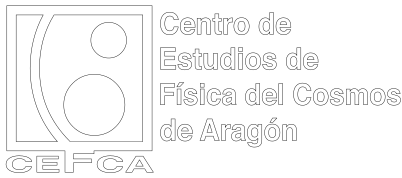Eight CEFCA researchers participate in Europe's most important astronomy meeting
Astrophysicists from the Centre for the Study of the Physics of the Cosmos of Aragon (CEFCA) will give six talks and present five posters in Cork, showcasing not only their research, but also the maps and instruments used to collect the data. In other words, these scientific contributions will also serve as a presentation to the European Astronomical Society of the Javalambre Astrophysical Observatory (OAJ) and telescopes such as the JST250, one of the most powerful in the world in terms of the combination of number of filters and wide field of view.
The contributions of CEFCA researchers are also an invitation to launch new projects based on the data produced at the OAJ: "it means that attendees will learn about the latest results we are obtaining in stellar physics, galaxy formation, active nuclei... but also the data we have used. This may spark the interest of other people and groups in using this data for their own research," explains Carlos López San Juan, head of the Research Department and speaker in Cork.
Projects such as J-PAS, the mapping of the Universe carried out from Javalambre, J-VAR, a catalogue of variable objects such as supernovae and asteroids, and J-PLUS, a map of the nearby Universe that already covers 65% of the total 8,000 degrees, will be presented. ‘This is a unique opportunity for any researcher in Europe to showcase their work, learn about the cutting-edge work being done, and maintain contact and establish new collaborations with the 1,500 people who will be attending the meeting for a week,’ says Carlos López San Juan.
The proposals in detail
CEFCA researchers link, for example, the Gaia space project, a map of the Milky Way, with the mapping carried out from Teruel. If the data from the Gaia space telescope is collated with J-PLUS, certain stellar populations could be better distinguished (A. Hidalgo) and their combination could also serve as a reference for data calibration (C. López San Juan). Based on Gaia's results, they also propose a census of so-called cataclysmic variables, interacting binary systems that orbit each other in a matter of hours (A. Ederoclite).
The J-VAR project, dedicated to variable stars, supernovae and minor bodies such as meteorites, is also presenting its first data in Cork and its potential application to projects such as the Legacy Survey of Space and Time, which is being developed from the Vera Rubin telescope, which will offer large panoramic views of the sky from the southern hemisphere and whose first images were made public this Monday. This telescope incorporates the world's most powerful camera and operates from the Chilean desert. (A. Ederoclite)
CEFCA's contributions also analyse the role of low-luminosity active galactic nuclei, which are very difficult to detect, in the evolution of galaxies (J.A. Ontiveros). In this field, they have presented J-HERTZ, a new catalogue with 500,000 sources that combines low-frequency radio data from the LOFAR Two-metre Sky Survey (LoTSS), infrared detections from WISE and narrow-band optical observations from J-PLUS (D. Fernández). Among the new features is a new algorithm that allows the remains of galaxy mergers, such as stellar streams and tidal tails, to be identified in the J-PAS data (S. Eskandarlou).
The annual meeting in Cork will bring together around 1,500 attendees until Friday 27 June, with another 500 scientists participating virtually. The sessions are divided into small symposiums grouped according to theme (cosmology, the Milky Way, planet formation, black holes, etc.). The theme that unites all the presentations is, in this case, the challenges and the role that Europe will play from 2040 onwards in the field of astronomy. Other notable topics will be environmental awareness and carbon footprint reduction, and Europe's collaboration with Africa.


